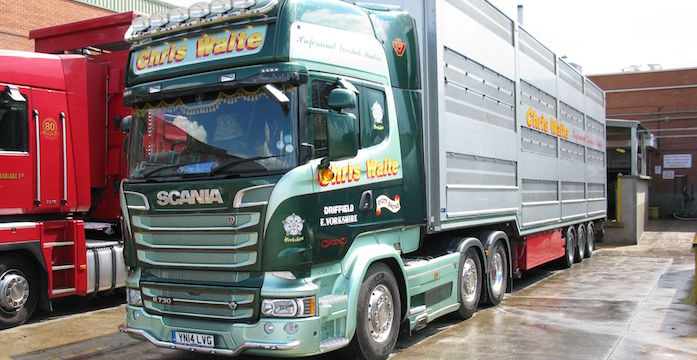Defra is considering new rules to improve the welfare of animals in transit after we leave the EU.
Earlier this week, Defra Secretary Michael Gove issued a call for evidence on a potential live export ban, alongside further changes that could also affect movements of livestock within the UK.
The call for evidence can be viewed here
The document says the Government would like the welfare in transport regulatory regime to ‘reflect fully the latest scientific and veterinary knowledge after the UK has left the EU’.
It intends to review current standards with a view, for example, to implementing stricter journey times and will propose ‘a series of improvements and reforms in due course’. It will work with the Devolved Administrations to try to ensure that any improvements are introduced ‘consistently as far as possible and without disadvantaging agriculture in any part of the UK’.
Defra is asking the Farm Animal Welfare Committee (FAWC) to review existing standards and to make recommendations for improvements in parallel with this public call for evidence.
Manifesto commitment
Mr Gove said: “This call for evidence begins to deliver on our manifesto commitment which aims to control the export of live animals for slaughter once we leave the European Union.
“With all options being considered, I am keen to hear from industry, the devolved authorities and charities on all possible options and evidence on this vital issue.”
British Veterinary Association President John Fishwick welcomed the call for evidence. He said “We believe that production animals should not be transported long distances to the abattoir but should be slaughtered as near to the point of production as possible. Animals should be transported on the hook, as meat, not on the hoof, as live animals.”
NPA chief executive Zoe Davies said: “The NPA will be responding to the consultation and we are seeking information from members to inform our response. Please email NPA@NPAnet.org.uk if you are able to help.
“Even though live exports for slaughter are not a big issue for the pig sector, this review will also cover all domestic transport, so it is vital we make the case for a proportionate policy that reflects animal welfare needs but also minimises disruption to trade.”
Clarifying the numbers
Figures in the document show nearly 9,000 live pigs were exported to the EU for slaughter in 2016. A further 1,700 exported for breeding. These numbers are significantly lower than for the cattle, sheep and poultry sectors.
It also shows more than 350,000 pigs were imported for slaughter. Nearly 100,000 were imported for ‘production’ and nearly 4,000 for breeding.
While the import numbers appear high, it is important to point out the export and import figures primarily reflects movements across the Irish border, Dr Davies added.




